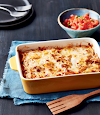Boneless Leg of Lamb
When buying lamb, we prefer the milder flavor and larger size of domestic or American lamb over gamier imported lamb from Australia or New Zealand. For Roast Butterflied Leg of Lamb with Coriander, Cumin, and Mustard Seeds, we opt to use a boneless leg that has been butterflied to an even thickness; whole, bone-in legs of lamb are tricky to cook evenly.Taking the Temperature of Meat and Poultry
An instant-read thermometer is the most accurate way to determine the doneness of meat and poultry. Take the temperature at the center of the roast, avoid touching any bones (if present), and check large roasts in multiple places. The temperature of the meat will continue to rise as it rests, an effect called carryover cooking, so it’s best to remove it from the heat when it’s 5 to 10 degrees below the desired serving temperature. Carryover cooking doesn’t apply to poultry, so it should be cooked to a safe serving temperature. The following temperatures should be used to determine when to stop cooking.
Beef/Lamb
Desired Doneness: Rare
Cook Until It Registers: 115 to 120 degrees (120 to 125 degrees after resting)
Desired Doneness: Medium-Rare
Cook until it registers: 120 to 125 degrees (125 to 130 degrees after resting)
Desired Doneness: Medium
Cook until it registers: 130 to 135 degrees (135 to 140 degrees after resting)
Desired Doneness: Medium-Well
Cook until it registers: 140 to 145 degrees (145 to 150 degrees after resting)
Desired Doneness: Well-Done
Cook until it registers: 150 to 155 degrees (155 to 160 degrees after resting)
Pork
Desired Doneness: Medium
Cook until it registers: 140 to 145 degrees (145 to 150 degrees after resting)
Desired Doneness: Well-Done
Cook until it registers: 150 to 155 degrees (155 to 160 degrees after resting)
Poultry
White Meat: 160 degrees
Dark Meat: 175 degrees
Let It Rest
We rest all roasts (as well as most smaller cuts of meat and poultry) after cooking. As meat cooks, its proteins tighten, driving its juices to the center of the meat. Allowing the meat to sit undisturbed for a time before serving allows the juices to redistribute themselves more evenly throughout the meat. As a result, meat that has rested will shed much less juice than meat sliced straight after cooking, which in turn makes for much juicier and more tender meat.
Secure Pot Roasts with Twine
Most roasts are unevenly shaped, which leads to uneven cooking. For our Pot Roast in Foil, we divide the pot roast into two smaller roasts and give each a neater shape by tying them with twine at about 1-inch intervals.






0 Comments